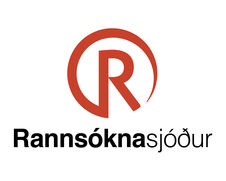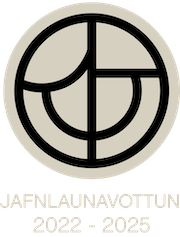Samþætting vist-, þróunar- og þroskunarfræðilegra þátta til mótunar á líffræðilegri fjölbreytni: Hornsíli í Mývatni sem líkan - verkefni lokið
Fréttatilkynning verkefnisstjóra
The grant of excellence funded project ECO-EVO-DEVO dynamics of biodiversity: Mývatn threespine stickleback as a model is finished. In the project we used the highly polymorphic and phenotypically plastic threespine stickleback (Gasterosteus aculeatus) as a model species and the unique characteristics of Lake Mývatn as our model system to increase our understanding of processes that shape biodiversity.
We used the conceptual ECO-EVO-DEVO model to guide our work and explored the interplay among ecological (ECO), evolutionary (EVO) and developmental (DEVO) processes in generating and maintaining biodiversity. In the study we used diverse methods combining, field surveys, using both phenotypic and genetic methods, transgenerational rearing experiments in the laboratory, outdoor mesocosm experiments and mathematical modelling. We have seen that in Lake Mývatn we have highly diverged population of stickleback, that is showing some systematic divergence in important traits in relation to ecological characters. This divergence is taking place in the face of considerable geneflow. The phenotypic diversity of the fish of the lake is shaped by plastic responses of the fish to their environment, where transgenerational plasticity is important. The stickleback population in the lake is highly dynamic with uneven distribution across the lake, where the proportion of the population in the smaller Ytriflói, where there is higher stickleback densities, driving population demographics in the larger Syðriflói. The project has resulted in unique datasets which in the addition to the already gathered results gives opportunity for future studies on the system. Two high impact publications have come out from the project, and a number of manuscripts are getting close to being submitted. Two postdoctoral fellows worked on the project and a high number of students at various stages in their career have been educated, one PhD student, three M.Sc. students and 32 summer or internship students participated. The results of the project have, and will continue, to give important information to increase our understanding on the interplay of ECO-EVO-DEVO factors in shaping biodiversity, which can help us in developing effective conservation measures, where we better understand how anthropogenic impact may shape the nature around us.
∙ Information on how the results will be applied
The results of the project gives strong bases for scientific studies increasing our understanding of temporal changes in ecological and evolutionary factors in large wild populations. We have now extensive knowledge of phenotypic variation in the population, and a unique dataset of over 500 full genome scans. The results of our transgenerational experiments give information on the importance of environmental factors in shaping phenotypic diversity and gene expression patterns. The results of our mesocosm experiments will show us how the evolution of diversity of the stickleback may influence ecological processes, e.g. invertebrate community structure, and how these processes may then feed back in to the evolution of the stickleback. All in all these information are useful for both conservation and harvest of large fish population.
∙ A list of the project’s outputs
There are a number of output from the project.
1 – Valuable databases for future studies on phenotypic and genetic diversity of the fish in the lake
2 – Education of young scientists, but 36 students at various stages in their career have worked on the project, with four students writing their main thesis (M.Sc. and PhD) on the project.
3 – Presentations in various scientific meetings as well as at invitation to other universities
4 – Publications, but two papers have been published, and other are in the later stages of writing.
Strickland, K., Räsänen, K., Kristjánsson, B.K., Phillips, J.S., Einarsson, A., Snorradóttir, R.G., Bartrons, M., and Jónsson, Z.O. 2023. Genome-phenotype-environment associations identify signatures of selection in a panmictic population of threespine stickleback. Molecular Ecology, Early view
Phillips J. S., Á. Einarsson, K. Strickland, A. R. Ives, B. K. Kristjánsson and K. Räsänen. 2023. Demographic basis of spatially structured fluctuations in a threespine stickleback metapopulation. The American Naturalist, 201:
Heiti verkefnis: Samþætting
vist-, þróunar- og þroskunarfræðilegra þátta til mótunar á líffræðilegri
fjölbreytni: Hornsíli í Mývatni sem líkan / ECO-EVO-DEVO dynamics of
biodiversity: Mývatn threespine stickleback as a model
Verkefnisstjóri: Bjarni Kristófer Kristjánsson, Háskólanum á Hólum
Tegund styrks: Öndvegisstyrkur
Styrktímabil: 2019-2021
Fjárhæð styrks kr. 150.084.000
Tilvísunarnúmer Rannís: 195571


